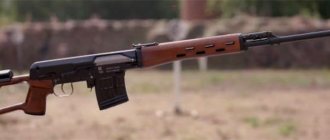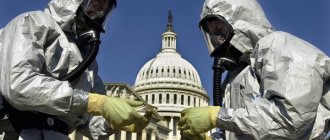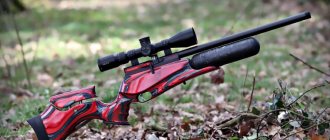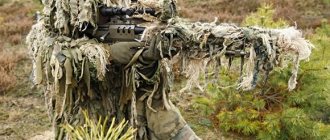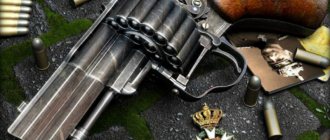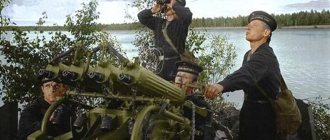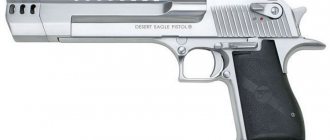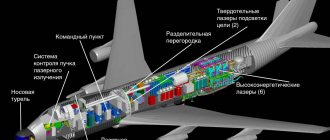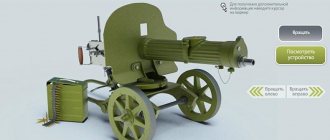1.1. Characteristics and properties of incendiary substances
(Article: 1.1. Characteristics and properties of incendiary substances)
Incendiary weapon
— these are incendiary substances and means of their combat use.
Incendiary weapons are designed to destroy enemy personnel, destroy their weapons and military equipment, material reserves, and also to create fires in combat areas.
The main damaging factor of incendiary weapons is the release of thermal energy and combustion products toxic to humans.
1.2. Brief characteristics of incendiary substances: napalm, pyrogel, thermite, white phosphorus
(Article: 1.2. Brief characteristics of incendiary substances: napalm, pyrogel, thermite, white phosphorus)
Incendiary mixtures based on petroleum products (napalm)
Incendiary mixtures based on petroleum products (napalm) can be unthickened or thickened (viscous). This is the most widespread type of incendiary mixtures with burn and incendiary effects. Unthickened incendiary mixtures are prepared from gasoline, diesel fuel or lubricating oils. Thickened mixtures are viscous, gelatinous substances consisting of gasoline or other liquid hydrocarbon fuel mixed in certain proportions with various thickeners (both flammable and non-flammable).
Metallized incendiary mixtures (pyrogels)
Metallized incendiary mixtures (pyrogels) consist of petroleum products with the addition of powdered or shavings of magnesium or aluminum, oxidizing agents, liquid asphalt and heavy oils. The introduction of combustible metals into the mixture increases the combustion temperature and gives these mixtures a burning ability.
Napalms and pyrogels have the following basic properties:
- adhere well to various surfaces of weapons, military equipment, uniforms and the human body;
- are easily flammable and difficult to remove and extinguish;
- when burning, they develop a temperature of 1000-1200ºС for napalms and 1600-1800°С for pyrgels.
Napalms burn due to oxygen in the air; combustion of pyrgels occurs both due to oxygen in the air and due to the oxidizing agent included in their composition (most often salts of nitric acid).
Napalms are used to equip tank, mechanized and backpack flamethrowers, aircraft bombs and tanks, as well as various types of fire mines. Pyrogels are used to equip incendiary aviation ammunition of small and medium caliber. Napalms and pyrogens are capable of causing severe burns to personnel, setting fire to equipment, and also creating fires in the area, in buildings and structures. Pyrogels, in addition, are capable of burning through thin sheets of steel and duralumin.
Termites and termite compounds
When thermites and thermite compositions burn, thermal energy is released as a result of the interaction of the oxides of one metal with another metal. The most widely used are iron-aluminum thermite compositions containing oxidizing agents and binding components. Thermites and thermite compounds, when burned, form liquid molten slag with a temperature of about 3000°C. The burning thermite mass is capable of melting elements of weapons and military equipment made of steel and various alloys. Thermite and thermite compositions burn without air access and are used to equip incendiary mines, shells, small-caliber bombs, hand-held incendiary grenades and bombs.
White phosphorus and plasticized white phosphorus
White phosphorus is a solid, poisonous, waxy substance that spontaneously ignites in air and burns, producing large amounts of acrid white smoke. The combustion temperature of phosphorus is 1200°C.
Plasticized white phosphorus is a mixture of white phosphorus with a viscous solution of synthetic rubber. Unlike ordinary phosphorus, it is more stable during storage; when ruptured, it is crushed into large, slowly burning pieces. Burning phosphorus causes severe, painful burns that take a long time to heal. It is used in artillery shells and mines, aircraft bombs, and hand grenades. As a rule, incendiary-smoke-producing ammunition is filled with white phosphorus and plasticized white phosphorus.
Pre-modern history[edit]
Ancient and early armies used a range of early heat weapons, including hot tar, oil, tar, animal fat and other similar compounds. Substances such as quicklime and sulfur can be toxic and blinding. Incendiary mixtures, such as the petroleum-based Greek fire, were fired by propelling machines or fed through a siphon. Sulfur- and oil-impregnated materials were sometimes ignited and thrown at the enemy, or attached to spears, arrows and bolts and fired by hand or machine. Some siege techniques such as mining. and boring - relied on flammable materials and fire to complete the collapse of walls and structures.
Towards the end of the period, gunpowder was invented, which increased the sophistication of weapons, starting with fire spears.
The concept of volumetric explosion ammunition
(Article: 2. Concept of volumetric explosion ammunition)
Volumetric explosion munitions, which appeared in the 1960s, will remain one of the most destructive non-nuclear munitions in this century.
The principle of their operation is quite simple: the initiating charge detonates a container with a flammable substance, which instantly forms an aerosol cloud when mixed with air; this cloud is detonated by a second detonating charge. Approximately the same effect is obtained with a household gas explosion.
Modern volumetric explosion ammunition is most often a cylinder (its length is 2-3 times its diameter) filled with a flammable substance for spraying at an optimal height above the surface.
After the ammunition is separated from the carrier at an altitude of 30-50 m, the braking parachute located in the tail of the bomb opens and the radio altimeter is activated. At a height of 7-9 m, an explosion of a conventional explosive charge occurs. In this case, the thin-walled body of the bomb is destroyed and the liquid explosive sublimes (the recipe is not given). After 100-140 milliseconds, the initiating detonator, located in a capsule attached to the parachute, explodes and the fuel-air mixture explodes.
In addition to the powerful destructive effect, volumetric explosion ammunition produces a colossal psychological effect. For example, during Operation Desert Storm, British special forces, carrying out a mission behind Iraqi troops, accidentally witnessed the use of a volumetric explosion bomb by the Americans. The effect of the charge had such an effect on the usually calm British that they were forced to break radio silence and broadcast information that the Allies had used nuclear weapons.
Volumetric explosion ammunition is 5-8 times stronger than conventional explosives in terms of shock wave strength and has colossal lethality, but at present they cannot replace conventional explosives, all conventional shells, aerial bombs and missiles for the following reasons:
- Firstly, volumetric explosion ammunition has only one damaging factor - a shock wave. They do not and cannot have a fragmentation, cumulative effect on a target;
- secondly, the brisance (i.e. the ability to crush, destroy an obstacle) of a cloud of fuel-air mixture is very low, since they use a “combustion” type explosion, while in many cases an explosion of the “combustion” type is required detonation" and the ability of explosives to crush the element being destroyed. In a “detonation” type explosion, the object in the explosion zone is destroyed and broken into pieces because the rate of formation of explosion products is very high. In a “combustion” type explosion, the object in the explosion zone, due to the fact that the formation of explosion products occurs more slowly, is not destroyed, but is thrown away. Its destruction in this case is secondary, that is, it occurs in the process of being thrown away due to collision with other objects, the ground, etc.;
- thirdly, a volumetric explosion requires a large free volume and free oxygen, which is not required for the explosion of conventional explosives (it is contained in the explosive itself in a bound form). That is, the phenomenon of a volumetric explosion is impossible in airless space, in water, in soil;
- fourthly, the operation of volumetric explosion ammunition is greatly influenced by weather conditions. In strong winds or heavy rain, the fuel-air cloud either does not form at all or is greatly dispersed;
- fifthly, it is impossible and impractical to create small-caliber volumetric explosion ammunition (less than 100 kg bombs and less than 220 mm shells).
Development and use in World War I[edit]
An incendiary bomb dropped on Southend-on-Sea in 1916.
The first incendiary devices dropped during the First World War fell on coastal towns in southwest England on the night of 18–19 January 1915. A small number of German bombs, also known as incendiary bombs, were finned containers filled with kerosene and oil and wrapped with tar rope. They were dropped from Zeppelin airships. On 8 September 1915, a Zeppelin L-13 dropped a large number of incendiary bombs, but even then the results were poor and they were generally ineffective in causing damage. They did have a significant impact on the morale of the civilian population of the United Kingdom. [1]
After further experiments with 5-liter barrels of benzene in 1918, scientists and engineers at the Griesheim- Elektron
Elektronbrandbombe
incendiary bomb was developed .
The bomb was ignited by a thermite charge, but the main incendiary effect was from the magnesium and aluminum alloy casing, which ignited at 650 °C, burned at 1100 °C and gave off steam that burned at 1800 °C. Another advantage of the alloy casing was its a lightness that was a quarter of the density of steel, which meant that each bomber could carry a significant number of them. [2] The German High Command developed an operation called "Fire Plan" (German: Der Feuerplan
), which used the entire German fleet of heavy bombers to fly in waves over London and Paris and drop all the incendiary bombs they could carry until they were all shot down or the crews were too exhausted to fly. It was hoped that the two capitals would be engulfed in unquenchable flames, forcing the Allies to sue for peace. [3] Thousands of Elektron bombs were stored at forward bomber bases and the operation was planned for August and again for early September 1918, but on both occasions the take-off order was canceled at the last moment, possibly due to fears of Allied reprisals against German cities . [4] The Royal Air Force already used their own "baby" incendiary bomb (BIB), which also contained a thermite charge. [5] A plan to bomb New York City with the new long-range Zeppelins of the L70 class was proposed by the commander of the airship fleet, Peter Strasser, in July 1918, but was vetoed by Admiral Reinhard Scheer. [6]
Use of incendiary substances
(Article: 3. Use of incendiary substances)
For combat use of incendiary substances the following are used:
- in the air force - incendiary bombs and incendiary tanks;
- in the ground forces - artillery incendiary shells and mines, tank, mechanized, jet and backpack flamethrowers, incendiary grenades, checkers and cartridges, fire mines.
Incendiary aircraft munitions
Incendiary aircraft munitions are divided into two types:
- incendiary bombs filled with incendiary substances such as pyrogel and thermite (small and medium calibers);
- incendiary bombs (tanks) filled with incendiary compounds such as napalm.
Small caliber incendiary bombs
are intended for fire destruction of wooden buildings, warehouses, railway stations, forest areas (in the dry season) and other similar targets. Along with the incendiary effect, small-caliber bombs in some cases can also have a fragmentation effect. They create fires in the form of burning small pieces of incendiary mixture within a radius of 3-5 m. The burning time of the main mass is 2-3 minutes. Bombs have a penetrating effect and are capable of penetrating into wooden buildings, vulnerable equipment such as airplanes, helicopters, radar stations, etc.
Medium caliber incendiary bombs
designed to destroy industrial enterprises, city buildings, warehouses and other similar objects by fire. When they explode, they create fires in the form of separate burning pieces of incendiary mixture scattered within a radius of 12-250 m. The burning time of the bulk of the mixture pieces is 3-8 minutes.
Incendiary aircraft tanks
designed to destroy manpower, as well as to create fires on the ground and in populated areas. The capacity of the tanks, depending on the caliber, is 125-400 liters; they are equipped with napalm. By design, these are thin-walled lightweight spherical-shaped tanks made of aluminum or steel alloys. When meeting an obstacle, the incendiary tank creates a volumetric zone of continuous fire for 3-5 seconds; In this zone, living forces receive severe burn injuries. The total area of the continuous fire zone is 500-1500 m2, depending on the caliber. Individual pieces of incendiary mixture can be scattered over an area of 3000-5000 m2 and burn for up to 3-10 minutes.
Artillery incendiary (incendiary-smoke-producing) ammunition
Artillery incendiary (incendiary-smoke-producing) ammunition
are used to set fire to wooden buildings, warehouses for fuel and lubricants, ammunition and other flammable objects. They can also be used to defeat manpower, weapons and equipment. Incendiary-smoke-producing ammunition is represented by shells and mines of various calibers, filled with white and plasticized white phosphorus. When ammunition explodes, phosphorus is scattered over a radius of up to 15-20 m, and a cloud of white smoke forms at the explosion site.
Along with phosphorus ammunition from barrel artillery, the potential enemy is armed with an incendiary unguided rocket
, designed to engage manpower and used using a portable single-rail launcher mounted from a shipping container or from a multi-barrel launcher transported on a vehicle.
The volume of incendiary substance (napalm) in the rocket is 19 liters. A salvo from a 15-barreled launcher hits personnel over an area of more than 2000 m2 .
Flamethrower weapons of ground forces of potential enemy armies
The operating principle of all jet flamethrowers
is based on the ejection of a jet of burning mixture by pressure of compressed air or nitrogen. When ejected from the barrel of a flamethrower, the jet is ignited by a special ignition device.
Jet flamethrowers are designed to destroy personnel located openly or in various types of fortifications, as well as to set fire to objects with wooden structures.
For backpack flamethrowers
different types are characterized by the following basic data: the amount of fire mixture is 12-18 liters, the flamethrowing range of the unthickened mixture is 20-25 m, the thickened mixture is 50-60 m, the duration of continuous flamethrowing is 6-7 s. The number of shots is determined by the number of incendiary devices (up to 5 short shots).
Mechanized flamethrowers
on the chassis of a light tracked amphibious armored personnel carrier, they have incendiary mixture tanks of 700-800 liters, a flame-throwing range of 150-180 m. Flame-throwing is carried out with short shots, the duration of continuous flame-throwing can reach 30 seconds.
Tank flamethrowers
, being the main armament of tanks, are installed on medium tanks. The reserve of incendiary mixture is up to 1400 liters, the duration of continuous flamethrowing is 1-1.5 minutes or 20-60 short shots with a firing range of up to 230 m.
Jet flamethrower
. The US Army is armed with a 4-barreled 66-mm rocket-propelled flamethrower M202-A1, designed for firing at single and group targets, fortified combat positions, warehouses, dugouts and manpower at distances of up to 700 m with explosive incendiary rocket-propelled ammunition with a warhead. , equipped with a self-igniting mixture in the amount of 0.6 kg in one shot.
Hand incendiary grenades
The standard samples of incendiary weapons of the army of a potential enemy are hand incendiary grenades
of various types, equipped with thermite or other incendiary compounds.
The maximum range when thrown by hand is up to 40 m, when fired from a rifle 150-200 m; burning duration of the main composition is up to 1 min. To destroy various materials and materiel that ignite at high temperatures, a number of armies have adopted incendiary bombs and cartridges
, depending on their purpose, equipped with various incendiary compositions with a high combustion temperature.
Fire bombs
In addition to service weapons, incendiaries made from local materials are widely used. These include, first of all, various explosive devices - fire mines. Fire bombs
are various metal containers (barrels, cans, ammunition boxes, etc.) filled with viscous napalm. Such land mines are installed in the ground along with other types of engineering barriers. To detonate fire mines, push- or pull-action fuses are used. The radius of destruction during an explosion from a fire mine depends on its capacity, the power of the explosive charge and reaches 15-70 m.
Links[edit]
- Wilbur Cross, "Zeppelins of the First World War", page 35, published 1991 House of Ideals ISBN I-56619-390-7
- Hanson, Neil (2009), First Blitz, Corgi Books, ISBN 978-0552155489 (pp. 406-408)
- Hanson, pp. 413-414
- Hanson, pp. 437-438
- Jump up
↑ Dye, Peter (2009).
"ROYAL AIR FORCE HISTORICAL SOCIETY JOURNAL 45 - RFC BOMBS & BOMBING 1912-1918 (pp. 12-13)" (PDF). www.raf.mod.uk.
_ Royal Air Force Historical Society. Archived from the original (PDF) on May 2, 2014. Retrieved May 1, 2014. - Hanson, page 412
- Manual of the Second World War. Archived August 30, 2005, at the Wayback Machine.
- "How we fight Japan with fire". Popular Science
. May 1945. Retrieved December 9, 2015. - "German artillery". Doric columns. Retrieved May 1, 2014.
- ^ ab Hussey, G. F. Jr. (4 January 1970) [6 October 1946]. "British-English Armament" (PDF). Command of naval artillery systems. Archived from the original (PDF) on March 4, 2016. Retrieved December 8, 2015.
- "A SUPERFLAMER dropped from a parachute throws fire 15 feet." Popular Mechanics
, December 1944, page 13. Article at bottom of page. - Pike, John. "Napalm".
- Nir, Robert (2013). Napalm: An American Biography. Harvard University Press. paragraph 99.
- Nir, Robert M. (2013). Napalm: An American Biography. Harvard University Press. pp. 102 -3.
- ↑
Alan Dawson,
55 Days: The Fall of South Vietnam
(Prentice-Hall 1977). - “Books in brief. Napalm: An American Biography by Robert M. Nir, Harvard University Press, 352 pp.” . Nature
.
496
(7443): 29. 2013. DOI: 10.1038/496029a. - "Liquid Fire - How Napalm Was Used in the Vietnam War". www.warhistoryonline.com
. Nikola Budanovic. Retrieved November 8, 2022. - although the 4th Geneva Convention, Part 3, Article 1, Section 28 states: “The presence of the protected person(s) shall not be used to protect specified points or territories from hostilities.”
